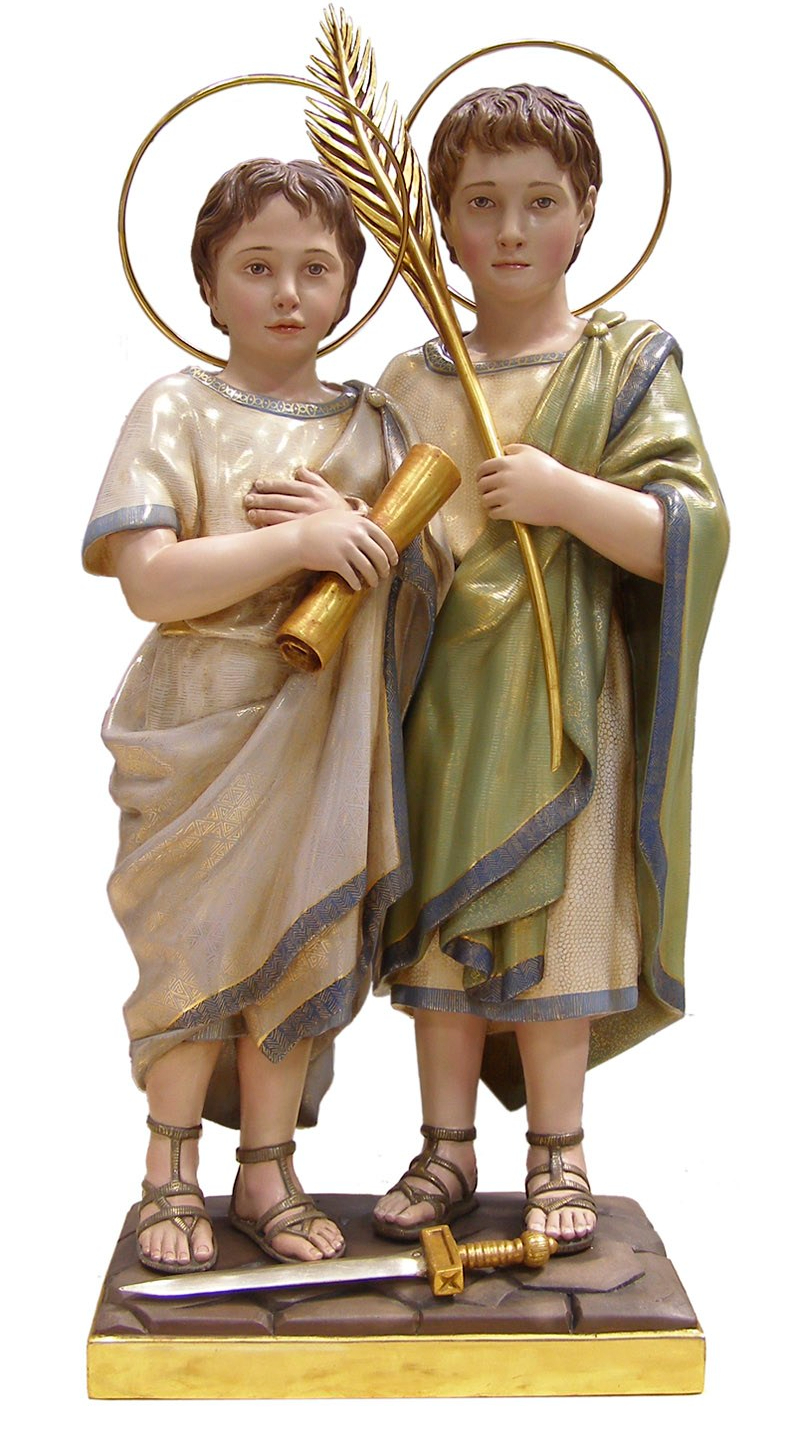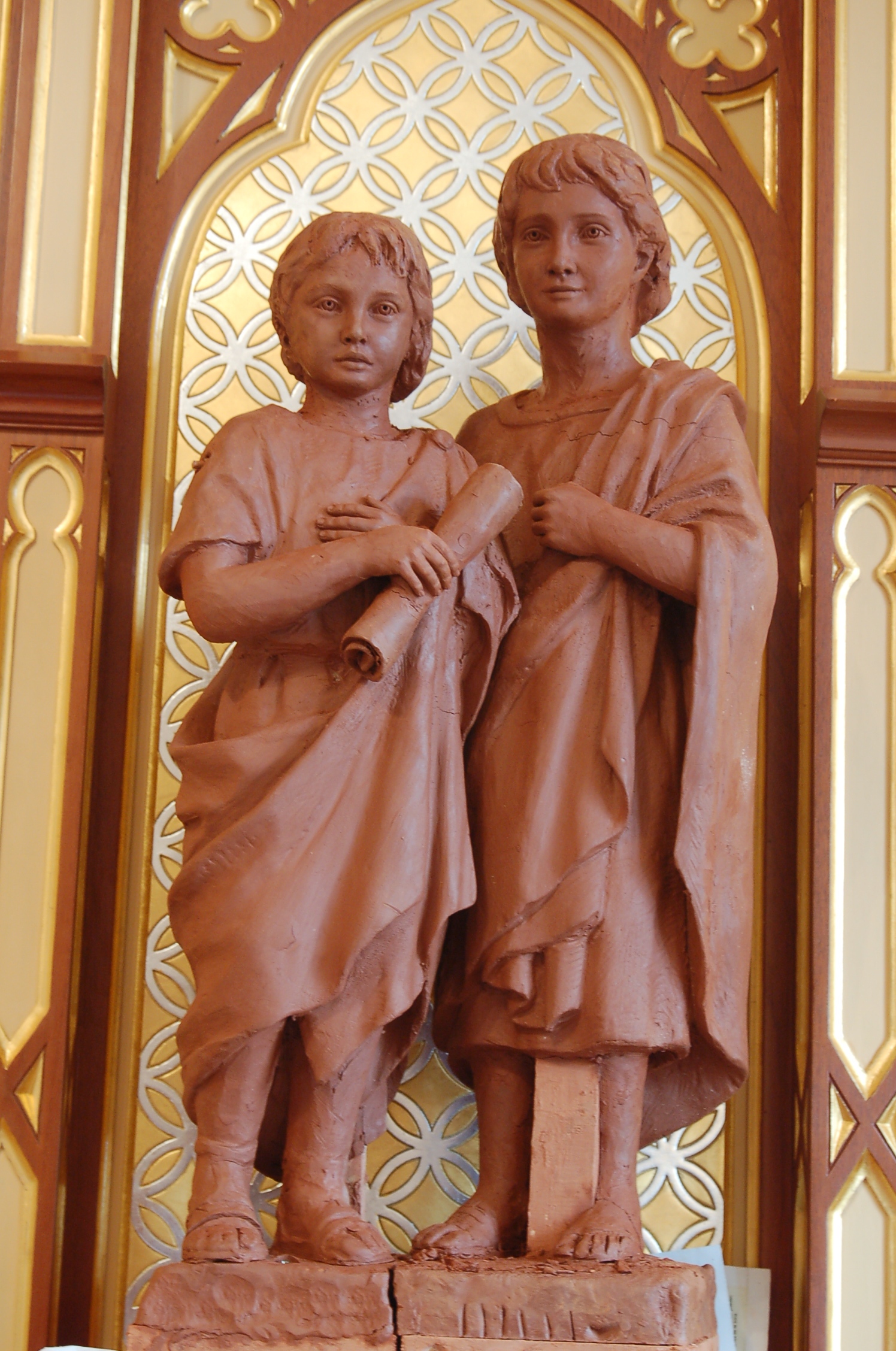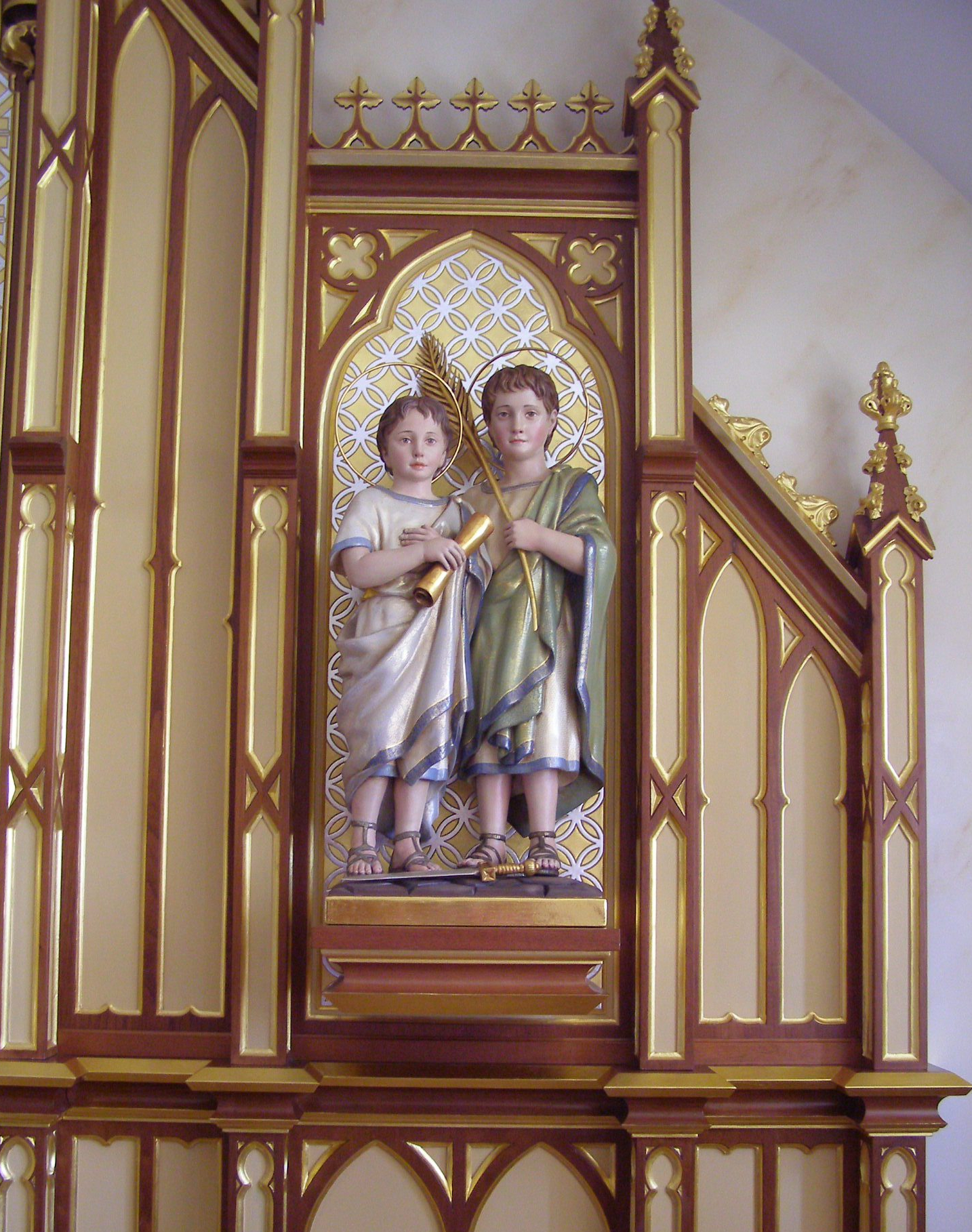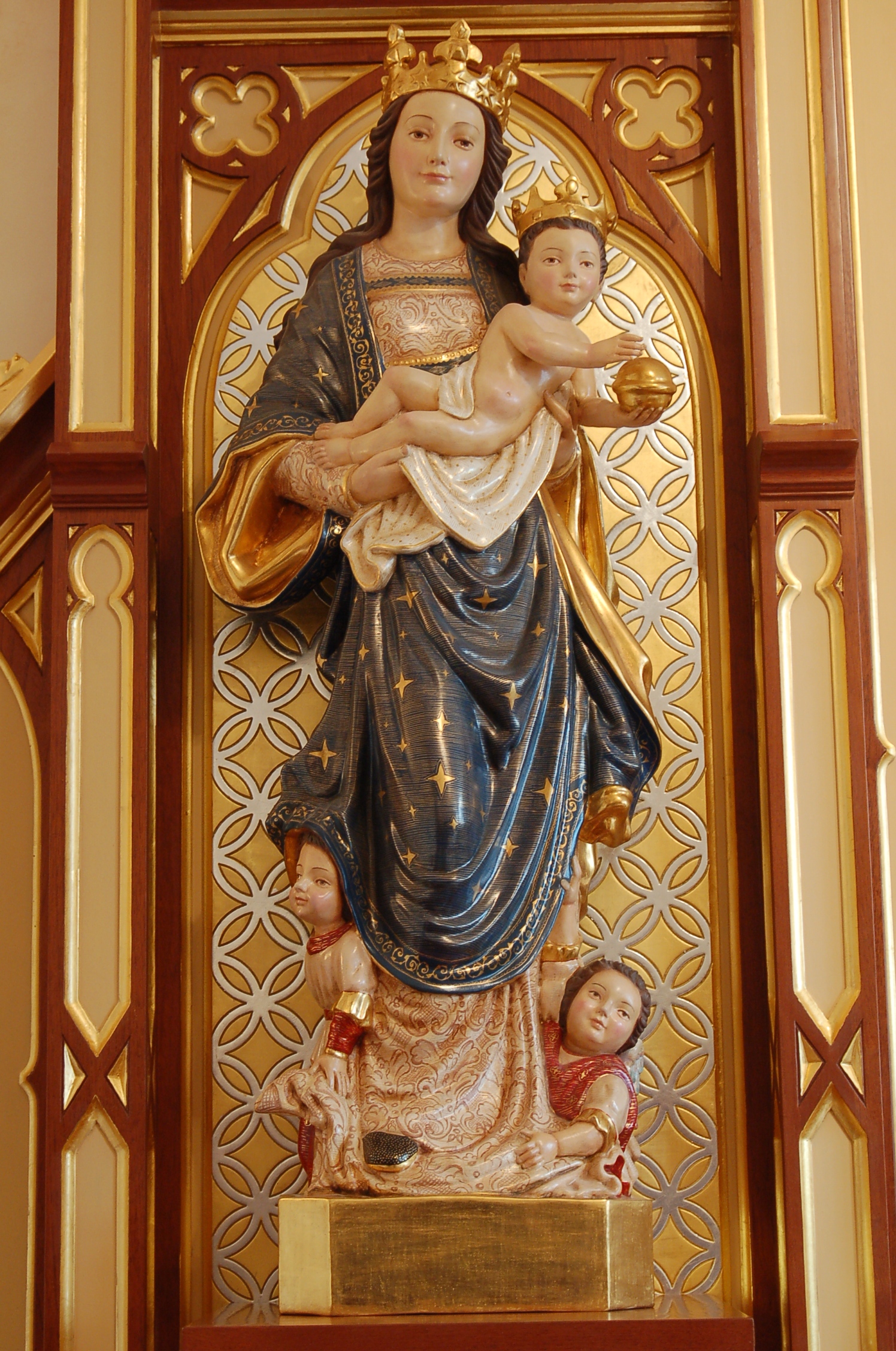Alcalá de Henares celebrates the 450th anniversary of the Reversion of the Relics of the Holy Children Justus and Shepherd, the most important Catholic event of the year in Alcalá de Henareswith the exception of Easter Week, as stated by the Bishop of Alcalá, Juan Antonio Reig Pla.
We take this opportunity to recall the history and attributes of these two holy children, regarding this carving that we made in Granda for the chapel of the Episcopal Palace of Alcalá de Henares.

The Holy Children are represented with their own attributes: the palm of martyrdom, a parchment from their tasks at school, the sword with which they were beheaded and the rock on which they knelt, on which it is said that the mark of their knees was engraved and which today is venerated in Alcalá de Henares.
THE CHILDREN WHO STOOD UP TO DIOCLETIAN
These two little Christians were martyred in the 4th century, during the so-called "Great Persecution" of Emperor Diocletian. According to the records, the two children, inflamed by the example of so many Christians who confessed their faith with death, one day, after leaving school, went to Dacian to confess themselves disciples of Jesus Christ, and the proconsul had them beheaded.
The names of the Holy Children appear in Prudentius' poem, which reads: "It will always be a glory for Alcalá to carry in its lap the blood of Justo and Pastor, two equal sepulchers where the gift of both is contained: their precious members."

A SCULPTURE OF THE HOLY CHILDREN FOR THE ARCHBISHOP'S PALACE
This is the version of the Holy Children made in our workshops for the chapel of the Archbishop's Palace of Alcalá de Henares, in Madrid. For this project we also designed and executed the design of a varnished cedar wood altarpiecewith details gilded with fine gold to the mixtión and polychrome areas.
For the central body and the lateral niches of the altarpiece, engraved wooden backdrops were designed, on which were later placed a Image of Christ the King of 70 cm, model of Granda, carved and waxed and with the crown and the cloth gilded in fine gold. On each side of the Christ, an image of the Madonna and Child carved in wood, polychromed and with the dresses stewed and the image of the Holy Childrenalso carved and polychrome wood, and represented with their own attributes: the palm of martyrdom, a parchment typical of children of school age, the sword with which they were beheaded and the rock on which they knelt, on which it is said that the mark of their knees was engraved and which today is venerated in Alcalá de Henares.


In addition, the ambo and the altar were also built, as well as the seat, the throne and the kneelers.
